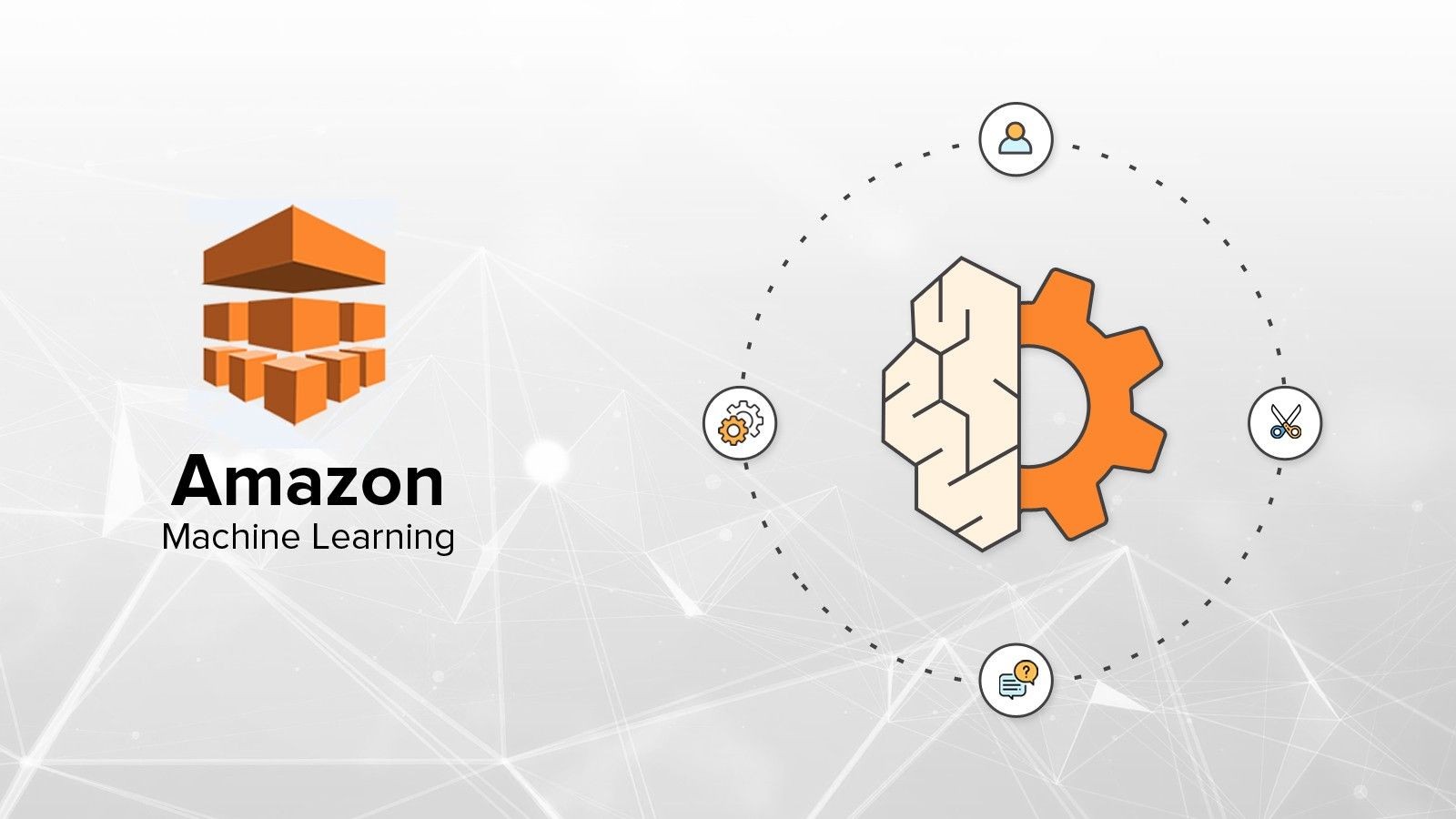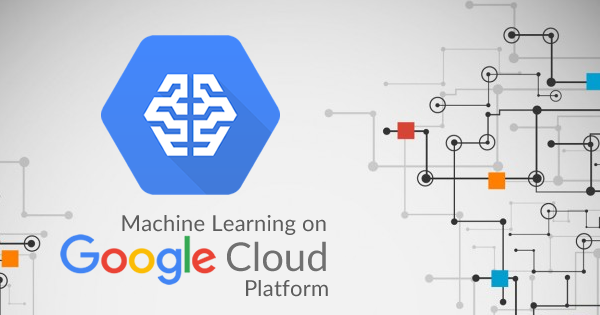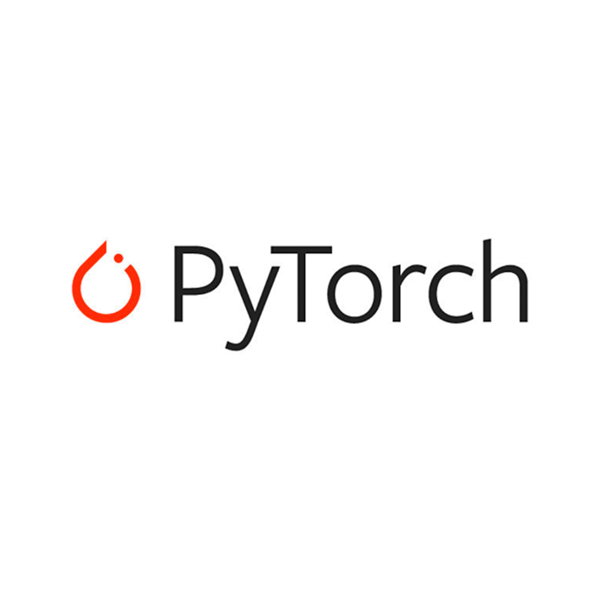- Introduction to Deep Learning
- Data Preprocessing for Deep Learning
- Convolutional Neural Networks
- Recurrent Neural Networks (RNNs)
- Long Short Term Memory (LSTM) Networks
- Transformers
- Generative Adversarial Networks
- Autoencoder
- Variational Autoencoders
- Diffusion Architecture
- Reinforcement Learning in Deep Learning
- Optimization Algorithms for Deep Learning
- Regularization Techniques
- Model Tracking and Accuracy Analysis
- Hyperparameter Tuning Techniques
- Transfer Learning
- Deployment of Deep Learning Models with REST API
- Deep Learning on Cloud Platforms
- Mathematical Foundations for Deep Learning
Deep Learning on Cloud Platforms | Deep Learning
Deep learning uses neural networks to perform various cognitive and complex tasks. Compared to machine learning algorithms, it improves performance significantly. However, the drawback to using deep learning is that it requires a lot of computational resources since it requires a large amount of data to train.
Here, cloud computing provides a solution to the problem. With the cloud, we have the availability of enormous computation power. These services which include distributed hardware, make the deep learning process more accessible and speed up computation. Now, management of these datasets and algorithm training processes has become much easier with cloud computing.
Firstly, there are several different advantages of using cloud platforms for deep learning:
Scalability- Large-scale computing capacity can be met on demand using cloud platforms. Now deep learning models often require large computing resources. Cloud platforms allow flexibility to scale resource use up or down based on demand. Hence model training can now be distributed across multiple machines.
Cost-efficiency- Cloud platforms allow the freedom of choosing to pay for as many resources as required. This means no up-front investment is required. No advanced hardware or large-scale hardware needs to be purchased. The pay-as-you-go structure of cloud platforms reduces costs and optimizes the allocation of resources.
Accessibility- Cloud platforms reduce complexity by providing pre-configured environments and frameworks like Tensorflow and PyTorch. They also provide project management and version control tools, this helps with streamlining collaboration workflows.
Storage- Datasets used for deep learning models are often quite large and hence require robust, scalable, and secure solutions for storage management. This very service is provided by cloud platforms. Therefore efficient access to data is available during the training of the model.
The objective of this article is to explore deep learning on cloud platforms and discuss their features. This includes an overview of the cloud platform, followed by an introduction to the deep learning frameworks available on the cloud. Next, we will discuss about how data is managed on the cloud, how model deployment and serving take place, and how cost optimization and resource management works with cloud platforms. Finally, we will discuss some security and privacy on cloud platforms and give some real-world examples and use cases.
Cloud platform overview
Let’s first get introduced to some major cloud platforms.
Amazon Web Services

AWS is a subsidiary of Amazon which provides a comprehensive cloud computing platform.
It provides a plethora of services at the business, organization, and individual levels. Some of the key services in deep learning provided by AWS include:
SageMaker
With this service, users can easily and quickly set up and build, train, and deploy machine learning models at scale. Their services include
-
Ground truth- This service allows users to create training datasets and also manage them
-
Studio- This constitutes the deployment environment for the machine learning model
-
Autopilot- This feature allows models to be trained in an automated fashion
-
Tuning- Useful for tuning hyperparameters of models.
-
Supports deep learning frameworks such as , PyTorch, TensorFlow, Keras, Gluon, Scikit-learn, and many more.
Alongside this SageMaker also supports Jupyter Notebook, which allows users to share and collaborate on their own work
It also contains the AWS marketplace using which prebuilt algorithms and models created by third parties can be bought. The purchase system is pay-per-use.
AWS deep-learning AMIs
This service is useful for building custom services and workflows for machine learning. They allow users to develop on the accelerator which includes AWS custom silicon and Intel Habana.
Google Cloud Platform (GCP)

Google Cloud Platform offers a variety of services which suitable for deep learning projects. Google provides this tool for users who can leverage it to build large-scale solutions.
Some key GCP services include:
Google Compute Engine
It provides virtual machines which are customizable making it easier to meet the computational requirements of deep learning workload. It contains NVIDIA GPUs which offer GPU instances that help with efficient training with neural network
Google Collaboratory
Colab is a cloud-based jupyter notebook environment that supports deep learning frameworks like Tensorflow and PyTorch which comes pre-installed. It comes with free resources which allow users to run and share code in a collaborative environment.
Google Cloud AI Platform
The AI platform is responsible for managing the environment necessary for developing, training and deploying machine learning models. The features it supports include distributed training, model prediction, hyperparameter training and many more.
Cloud Services Relevant to Deep Learning
Compute: Cloud platforms provide compute services in the form of CPU and GPU to handle large computational requirements of deep learning. These services are offered in the form of virtual machines whose instances can be scaled according to workload demand.
Storage: Now deep learning projects often require large storage spaces for containing large datasets. Cloud platforms provide scalable and durable storage solutions with their storage services. These services enable secure storage and retrieval of data during the training stage and inference stage.
Networking: Cloud platforms provide networking features which include low latency and high-bandwidth interfaces, this in turn helps with managing deep learning workloads.
For using distributed deep learning frameworks or training models across multiple compute instances, high-performance networking can ensure efficient and fast communication between these distributed components. Hence training time is reduced and overall performance is improved.
GPU/TPU instances: Graphical Processing Units combined with parallel computing plays a critical role for deep learning calculations. GPUs are designed to provide large parallel computations making them efficient for deep learning tasks. They also help with Accelerated Matrix operations such as convolutions and multiplications, which deep learning lies heavily upon. TPUs or Tensor Processing Units are designed as matrix processors specialized to handle neural network workloads. They were specifically designed for the deep learning and machine learning domain and were made publicly available to others in 2018 by Google.
Cloud platforms offer virtual machines specifically designed to utilize the power of GPU and TPU. They allow on-demand access to GPU and TPU and the ability to scale the instances of GPU and TPU according to workload. This ensures cost is reduced by only paying for the resources required.
Key considerations when selecting a cloud platform for deep learning projects
-
Compute Resources: It is important to ensure the type and specificity of GPU and TPU resources including the number of cores, hardware, and availability of specialized hardware for deep learning acceleration
-
Frameworks- It is important to check what frameworks and libraries are available like Keras Pytorch or Tensorflow. It is also important to ensure that the cloud platform provides pre-configured environments and easy integration with these frameworks.
-
Scalability and Elasticity- It is important to ensure that for compute resources, networking, and storage capacity, the platform offers scalability and elasticity
-
Storage Capability- For storage capabilities we have to ensure that the durable storage services can handle large datasets for deep learning purposes, looking out for ease of data transfer and integration with data preprocessing tools.
-
Cost and Pricing Models- It is important to evaluate the cost structure and pricing models offered by the cloud platforms. This includes storage pricing, instance cost, data transfer fees, and any cost optimization options available like discounts.
-
Security and Compliance: Deep learning projects can contain sensitive data hence it is important that the cloud platform provides robust security measures. These measures involve data encryption, access control, and compliance certifications. These measures can ensure that compliance with security standards and regulations is met
Deep Learning Frameworks on the Cloud
Tensorflow

Google Cloud Platform, which introduced TensorFlow, offers excellent support for the framework. With GCP, deep learning virtual machine instances that support Tensorflow, such as Deep Learning VMs come pre-configured. This includes the necessary libraries pre-installed.
Other platforms that support Tensorflow include AWS, Microsoft Azure, IBM Cloud, and Oracle Cloud infrastructure.
Pytorch

Amazon web services provide support for Pytorch via its deep learning ecosystems. For the AWS the Amazon Machine Images (AMIs) come with Pytorch pre-installed. Another Amazon service includes the Amazon Sagemaker which uses Pytorch for integrating, training, building, and deploying machine learning models at scale.
Utilizing pre-configured deep learning environments and containers
-
Streamlined setup- We can utilize the pre-configured deep learning environments which come with necessary dependencies, libraries and frameworks pre-installed to optimize our deep learning workloads
-
Version control: We can choose specific versions of libraries and frameworks as these pre-configured environments come with version control support, ensuring consistency in the development and deployment pipeline.
-
Portability: Deep learning containers offer the feature of packaging our code, models, and dependencies into a single unit that can be easily deployed on different cloud platforms. This feature allows for seamless migration and deployment across multiple environments.
Data Management on the Cloud
-
Data preparation- We should organize and prepare our dataset before uploading it to the cloud platform. This is done to ensure that dataset is properly formatted and structured according to the requirement
-
Upload the dataset- We can use the APIs, the cloud platform’s tools, or the command line interfaces to upload our dataset to the container. The cloud platform provided SDK’s and APIs can be used to achieve this programmatically or this can be achieved via a web-based interface
-
Data Preprocessing- According to our deep learning project requirements, we may need to preprocess the dataset. This could involve resizing images, normalizing data, and data splitting along with numerous other methods.
-
Data Pipelines- We can create data pipelines to automate data preprocessing, augmentation, and integration with our deep learning models. We can achieve this using cloud platform services like AWS Data Pipeline, Azure Data Factory, and Google Cloud Dataflow to automate these tasks.
-
Storage Selection- We need to select a suitable storage service provided by the cloud platform. We can select from commonly used storage services like Amazon S3, Google Cloud Storage, and Azure Blob Storage amongst others. These services offer durability, scalability, and easy access to our datasets
-
Data Retrieval Strategies- It is important to manage the data retrieval strategies. Content Delivery Networks or CDNs are commonly used for data retrieval and caching. CDN services like Amazon CloudFront, Google Cloud CDN, or Azure CDN, can replicate data across multiple edge locations. Let’s say a user has requested some data, this data can be retrieved from the nearest edge location, this, in turn, reduces latency and improves data retrieval speed.
Model Deployment and Serving
Exporting and Deploying trained models on the cloud platform
This process involves packaging our trained models, making them available for inference, or for serving in the cloud environment. The general steps involved include:
-
Model Export- This involves saving and exporting our trained model in a format compatible with the cloud platform. This also involves choosing the library or framework involved with training. Some common formats include TensorFlow SavedModel, ONNX(Open Neural Network Exchange), or Pytorch model checkpoints.
-
Containerization- This method encapsulates our model and its dependencies. Popular technologies include Docker or Kubernetes.
-
Deploying to Managed Services- Cloud platform services include providing simple APIs from model serving which abstract away the infrastructure management. We can use these services to our advantage which are specifically designed for model deployment. Examples of these services include AWS Lambda, Google Cloud Functions, and Azure Functions
Setting Up a Model Serving Infrastructure
-
API endpoints: We can set up API endpoints that expose our deployed model for inference. The purpose of these endpoints is to receive data and return model predictions or results. Now, there are cloud platform services available to manage API gateways such as AWS API Gateway, Google Cloud Endpoints, or Azure API Management
-
Serverless Functions: If users prefer serverless architecture, they can use serverless functions. These functions include AWS Lambda, GCP Cloud Functions, or Azure Functions. These functions can help the user to deploy and serve their models, by allowing the user to execute code, without provisioning or managing servers.
Auto-scaling and load balancing for model serving
Auto-Scaling and Load Balancing: Users can handle varying levels of inference requests by configuring auto-scaling and load-balancing settings. Cloud platforms offer services like autoscaling groups, managed instance groups, or Kubernetes clusters. These services can adjust resources based on demand automatically.
Cost optimization and resource management
It is important to take various factors into consideration when understanding the pricing models that are offered by cloud providers. These factors include:
-
Compute Resources: Different types of resources are provided by cloud providers with prices based on factors like instance type, CPU, memory, and GPU capabilities. Depending on the cloud provider, compute resources typically follows an hourly or per-second billing model.
-
Storage: Storage costs vary depending on types of storage like object storage, file storage, etc. It also depends on storage capacity and data transfer rates.
-
Autoscaling and Load Balancing: these features help optimize resource usage and cost. They automatically scale a number of instances based on demand, hence reducing cost during low traffic periods and providing adequate resources during peak time.
Security and Privacy
Some key aspects to consider for security and privacy involves:
-
Data Encryption: Cloud platforms provide encryption mechanisms like SSL/TLS for data in transit purposes. They also provide options for encryption of data stored in their services, which include object storage or databases.
-
Identity and Access Management: This feature implements strong access controls and authentication mechanisms to manage user access to cloud resources. IAM services provide appropriate permissions and roles to users, they also perform multi-factor authentication where possible.
-
Data Backup and Disaster Recovery: Cloud platforms establish regular data backup procedures to protect against data loss.
-
Network Security: Cloud platforms configure network security groups or firewall rules to restrict incoming and outgoing traffic to the cloud resources of the user.
-
Compliance and certification: It is important to consider the specific compliance requirements for our industry or region. This includes GDPR, HIPAA, or PCI DSS. Therefore we must choose a cloud provider that offers compliance certifications relevant to our needs and we should review their compliance documentation to ensure alignment with our regulatory obligations.
-
Data backup and disaster recovery: This involves establishing regular data backup procedures to protect against data loss. Hence we should consider the disaster recovery options provided by the cloud platform. This involves automated backup and replication across different availability zones or regions. This ensures business continuity in case of unexpected events
Real-world Examples and Use Cases
Image recognition and object detection on the cloud
-
Autonomous Vehicle- For autonomous vehicles, image recognition and object detection are crucial aspects for the identification and classification of objects such as pedestrians, traffic sign vehicles, and obstacles in real time. This can be enabled to a great extent using cloud platforms
-
Surveillance and Security- Surveillance systems can employ image recognition and object detection to identify suspicious activities alongside detecting unauthorized objects in monitored areas.
Natural language processing applications on the cloud
-
Text analysis and semantic analysis- Cloud platforms can provide NLP services that can help analyze text data to extract insights, sentiments, and key information.
-
Language Translation- Machine translation services offered by cloud platforms can automatically translate between different languages. These services in turn can help with localizing applications or translating website content.
Recommender systems and personalized AI services
-
E-commerce- Using cloud platforms, online retailers can utilize image recognition for the classification and tagging of products based on their visual attributes. This in turn can improve search and recommendation systems.
From this article, we have uncovered the fact that cloud platforms play a crucial role in various deep-learning applications. Key takeaways include:
-
Understanding the various services offered by cloud platforms is crucial in choosing which platform to use. This includes figuring out the cost of different services and choosing the right service configuration to fit the business needs and demands.
-
Figuring out the security and compliance aspects when handling sensitive data with cloud platforms is crucial otherwise it can lead to data breaches and data loss
-
It is important to understand which model deployment services to choose from, for efficiency in this region
The future trend shows a massive surge toward using cloud platforms for deep learning purposes as their service standard increases day by day and the cost optimization option increases for users as competition increases.